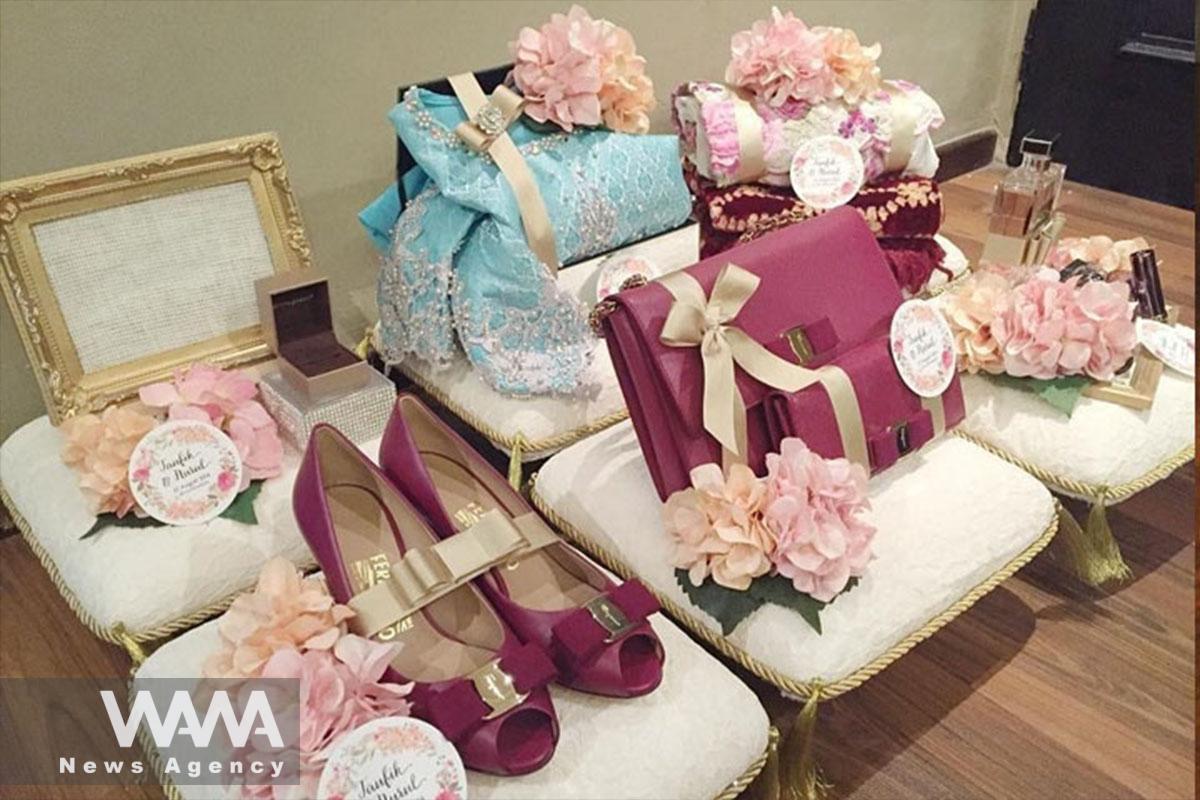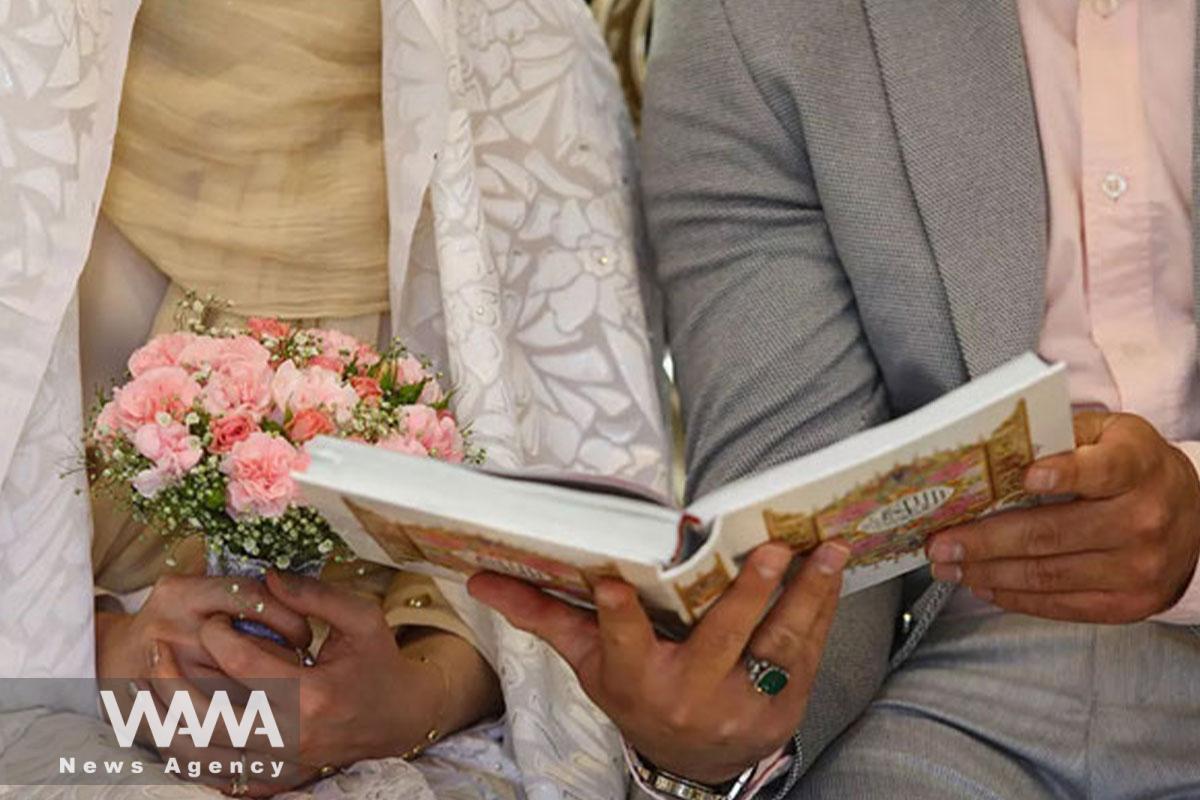Exploring Iranian Wedding Traditions
WANA (July 27) – Weddings in any society are rich with diverse customs and traditions, often intertwined with the community’s culture, religion, and beliefs. Like other countries, Iran’s various ethnicities and cities have their own unique ways of celebrating weddings, which have evolved over time.
The typical stages of an Iranian wedding include Khastegari (proposal), Bale Boroon (engagement), Aghd (marriage contract), Pagosha (welcoming the bride and groom), purchasing the Jahiziyeh (dowry), Henna Night, the wedding celebration, Patakhti (post-wedding party), and the honeymoon.
Khastegari (proposal)
In the past, in Iran, families would choose a suitable girl for their son and proceed with the marriage proposal. The boy and girl would get to know each other through family visits. Several members of the boy’s family would visit the girl’s home, where the potential bride would serve tea and answer questions. If the girl was deemed suitable, the boy would join the subsequent visit with the consent of the girl’s family.
Today, much like in many other countries, most Iranian couples get to know each other before marriage. If both parties agree, they inform their families and arrange the formal engagement ceremony.
Each approach has its own advantages and disadvantages. The traditional method involved minimal emotional involvement due to the lack of prior acquaintance, allowing couples to make logical choices initially and develop feelings over time.
The modern approach involves the couple meeting independently and gradually expanding their relationship, driven by emotions, which can lead to greater emotional distress if the relationship ends due to incompatibility or other issues.
In Iran, the groom’s financial obligation, called Mehr, is a key part of the engagement process. The amount should be manageable for the groom. In recent decades, many people have been imprisoned for failing to pay the agreed Mehr after a divorce, with around 2,500 people currently incarcerated for this reason. New laws in Iran now limit the maximum amount of Mehr to prevent imprisonment if the groom cannot afford to pay.
Bale Boroon (engagement)
Following the mutual approval of the prospective bride and groom, the Bale Boroon ceremony is held with the presence of senior family members. During this event, groom goes to bride’s house with a bunch of flowers and sweets and discussions take place regarding the dowry (Mehr), wedding expenses, and the setting of dates for the engagement and wedding ceremonies. The agreements made are documented on paper and signed by both families. A traditional aspect of the Bale Boroon includes the groom’s family bringing gifts such as a ring and a piece of fabric for the bride.

Aghd (marriage contract)
After the Bale Boroon and the bride’s acceptance, the marriage ceremony (Aghd) follows. This event can be held at the bride’s home, a hall, or a marriage registry office, depending on the bride’s family’s preference. The ceremony must be officiated by a religious officiant (usually a cleric), with at least two competent witnesses present to formalize the marriage contract. It is notable that the costs associated with the marriage ceremony are typically borne by the bride’s family.
Once the marriage contract is recited by the officiant, the couple is officially married and can interact freely until they move into their own home. During the period between the engagement and the wedding, it is customary for the groom’s family to visit the bride’s home during festivals and special occasions, exchanging gifts.
A key feature of the Iranian wedding ceremony is the Sofreh Aghd, a traditional wedding spread. The bride and groom sit in front of a mirror and candlesticks, surrounded by symbolic items such as sugar cones, honey, bread, cheese, herbs, and fruits, all contributing to the decoration of the Sofreh. The ritual of grinding sugar cones over the couple, performed by close relatives, symbolizes the wish for a sweet and happy marriage.

Pagosha (welcoming the bride and groom)
One of the enduring customs in Iranian weddings is the Pagosha, a tradition that continues from the past to the present day. Following the wedding ceremony, the bride and groom are successively invited to the homes of their relatives. These relatives welcome the newlyweds with gifts, fostering social interactions and helping the couple integrate into the extended family and community.
This practice encourages the bride and groom to visit family members, participate in social activities, and become acquainted with their relatives, thereby strengthening familial bonds and support networks.
Shopping for Jahiziyeh (dowry)
In the past, the process of purchasing the dowry (necessary household items for married life) involved both the bride and groom along with their families. However, today, it is more common for the couple to undertake this task on their own. Essential wedding purchases include the bride’s ring, mirror and candlesticks, bridal gown, groom’s suit, and makeup items.
A few days before the wedding ceremony, close relatives gather at the couple’s home to help arrange the dowry items, a tradition known as Jehazbaran. This event signifies communal support and celebration as the couple prepares for their new life together.
Henna Night
On the final night of the bride’s stay at her parental home, a celebration known as Henna Night (Henna Bandan) is held. This event, serving as the bride’s farewell party, involves the female relatives taking the bride to a bathhouse, where she is groomed and adorned. They return home before sunset to commence the festivities, which include singing and dancing.
The groom’s family also participates by bringing fruits, sweets, and decorated henna to join in the celebration. At the end of the night, henna is applied to the bride’s hands, and guests are invited to partake in this tradition if they wish. This ceremony symbolizes the joy and blessings bestowed upon the bride as she transitions to her new life.
Jashn-e-Aroosi (Wedding Celebration)
On the day of the wedding, guests head to the bride’s parental home to be received by her family. The bride’s father is responsible for placing his daughter’s hand in the groom’s hand. Following this, the bride and groom are accompanied with a mirror and Quran as they are sent off to their new home.

The groom’s family escorts the bride to their home, where they host a grand reception for the guests, which may be held in a hall, garden, or their house. The event features a dinner and celebrations with music and dancing. At the end of the night, the bride and groom, accompanied by young relatives and friends, head to their new home to begin their married life.
In some provinces of Iran, particularly in rural areas, the wedding festivities can continue for up to a week at the bride and groom’s homes. Guests may join the celebrations several days before the actual wedding day.
A traditional custom involves guests contributing money to the wedding hosts as a form of financial aid. The eldest or closest family member to the bride and groom presents a larger amount, while others contribute lesser amounts. This money is often placed in a special tray or envelope and given to the families.
These monetary gifts help cover the significant expenses of the wedding and provide financial assistance to the newlyweds as they start their life together. This practice ensures that, with generous contributions from the guests, the couple can have a more secure and comfortable beginning to their marriage.
Patakhti (post-wedding party)
It is customary to hold the Patahkhti ceremony the day after the wedding. In this event, the bride, beautifully adorned and dressed, sits on a chair as invited guests come to celebrate with her. The guests dance, offer their congratulations, and present gifts to the bride.
Honeymoon
The honeymoon is a cherished tradition in Iranian weddings. Following the wedding and Patahkhti ceremonies, the bride and groom embark on a trip to spend quality time together and become more acquainted with each other’s personalities. This journey can be either domestic or international, creating lasting memories as they begin their married life.
It is important to note that many traditional Iranian wedding customs have been significantly influenced by global cultural trends. Today, we observe fewer of the authentic Iranian traditions in weddings and related ceremonies than in the past. The widespread adoption of global practices has overshadowed many of these time-honored customs, leading to a decline in their prevalence and practice.












